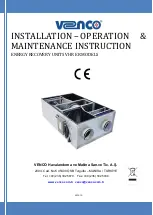
19
2.13 When Connecting To
Home, Shop, or Farm
Wiring
NOTE: THIS UNIT SHOULD NEVER BE USED AS
THE MAIN SOURCE OF POWER.
1.
Equipment grounding terminal.
2.
Grounding cable. Use # 10 AGW or larger insulated
copper wire.
3.
Water meter.
4.
Metal water pipe
5.
Driven ground rod.
Typical connection to supply emergency or standby power.
1.
Power Company Service Meter.
2.
Main and Branch Over-current Protection.
3.
Double-Pole, Double-Throw Transfer Switch.
Obtain and install correct switch. Switch rating
must
be same as or greater than the branch over-current
protection.
4.
Circuit Breaker or Fused Disconnect Switch. Obtain
and install correct switch.
5.
Extension Cord. Generator Connections. Connect
terminals or plug of adequate amperage capacity to
cord. Follow all applicable codes and safety
practices. Turn off or unplug all equipment
connected to generator before starting or stopping
engine. When starting or stopping, the engine has
low speed which causes low voltage and frequency.
6.
Load connections.
NOTE: It is the installer's responsibility to follow the
applicable rules from the National Electrical Code
(NEC), state, local, and OSHA codes for the
installation and use of auxiliary power generators.
Customer-supplied equipment is required if generator is to
supply standby power during emergencies or power
outages.
2.14 Auxiliary Power
Requirements
The following section provides some general guidelines for
the installation and operation of an auxiliary power generator.
Not all the guidelines may be applicable to this specific unit.
The auxiliary power supplied from the generator is most
commonly used in industrial, small business and
residential applications. For industrial applications, a
portable unit can be moved to the job site to power
portable tools, lights, compressors, etc. For small
business and residential applications, the generator
supplies standby power during a power outage.
It is the installer’s responsibility to follow all applicable
codes when installing an auxiliary power generator. It is
also the installer’s responsibility to determine if the
generator is capable of supplying adequate power for a
specific application. When installing consult qualified
TECHNICAL SPECIFICATIONS
Содержание 000 Pro K
Страница 2: ...2 Date 06 03 04 KLA Manual ...
Страница 25: ...26 Section 5 Parts List 5 01 Stator Parts ...
Страница 27: ...28 5 02 Front Panel Parts ...
Страница 29: ...30 5 03 Sheet Metal Parts ...
Страница 32: ...33 5 06 Schematic ...
















































